- About
-
Advocacy
- Submit Legislative Proposals to the ILA Public Policy Committee
- Advocacy Policies and Procedures
- More Than a Building
- Census 2020 Resources
- Creating or Changing Illinois State Library Law
- Illinois Minimum Wage Resources
- Intro to Property Taxes for IL Libraries
- ILA Public Policy Principles
- Legislative Issues
- Libraries and Immigration Enforcement
- Making Your Case
- Ready, Set, Advocate
- TIFs and Public Library Districts in Illinois
- Top Ten Advocacy Tips
- Unite Against Book Bans in Illinois
-
Committees
- Frequently Asked Questions (FAQ) about ILA Committees
- Advocacy Committee
- Awards Committee
- Conference Program Committee, 2025
- Conference Program Committee, 2026
- Diversity Committee
- Finance Committee
- Fundraising Committee
- ILA Reporter Advisory Committee
- Illinois Libraries Present Committee
- Illinois Public Library Standards Committee
- Intellectual Freedom Committee
- iREAD Committee
- Nominating Committee
- Public Policy Committee
- Reaching Forward North Committee
- Reaching Forward South Committee
- Events
-
Forums
- Frequently Asked Questions (FAQ) about ILA Forums
- Human Resources & Administration Forum (HRAF)
- Illinois Association of College & Research Libraries Forum (IACRL)
- Library Trustee Forum (LTF)
- Marketing Forum (MF)
- Resources & Technical Services Forum (RTSF)
- Retired Members Forum
- Small and Rural Libraries Forum (SARL)
- Students and New Professionals Forum (SANP)
- Young Adult Services Forum (YASF)
- Youth Services Forum (YSF)
- Initiatives
- Membership
- Publications
Celebrating the Freedom to Read: Banned Books Week 2025
Illinois Association of College & Research Libraries Forum (IACRL)
September 25, 2025Compiled by Kaitlyn Weger, Olney Central College
Each year, libraries, schools, and literary organizations across the country unite to observe Banned Books Week—a powerful affirmation of the freedom to read and the right to access diverse perspectives. From October 5–11, 2025, the Illinois Association of College & Research Libraries (IACRL) invites its member institutions to join this national movement by spotlighting the essential role academic libraries play in resisting censorship and fostering open inquiry.
To mark this year’s celebration, the IACRL Communications Committee is featuring members’ favorite banned or challenged books. Whether these titles sparked meaningful dialogue, challenged societal norms, or simply left a lasting impression, we aim to showcase how these works have shaped our academic communities—and why they continue to matter.
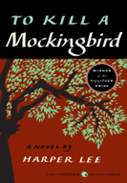
To Kill a Mockingbird by Harper Lee: Recommended by Nicolene Sarich, currently unaffiliated
Growing up in small town Alabama during the 1930s, Scout Finch and her brother Jem play elaborate games based on neighborhood recluse Boo Radley. Then, their lawyer father Atticus defends a Black man accused of raping a white woman. This case brings out ugliness and prejudice in friends and neighbors. Scout and Jem learn to see different sides of people and what it means to stand up for the truth. This book covers family, school, and courtroom drama.
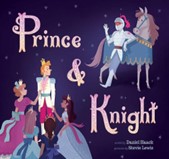
Prince & Knight by Daniel Haack: Recommended by Shoshana Frank, Student Engagement Librarian, Aurora University
In this modern fairy tale, a noble prince and a brave knight come together to defeat a terrible monster and in the process find true love in a most unexpected place.
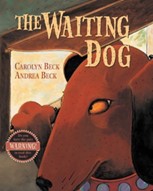
The Waiting Dog by Andrea and Carolyn Beck: Recommended by Ryan Franklin, Outreach Coordinator, Illinois State Library
I spent last year exploring historically banned Children’s books. Mainly books that were banned 20 years ago. I read some wild things, but my favorite was The Waiting Dog by Andrea and Carolyn Beck. It was first published in 2003 and was banned for violence, grotesque visuals, and being unfit for the age group. This is a dog dreaming of eating the mailman. How the dog will pull the mailman through the mail slot and eat them piece by piece.
I thought this book, which is a “horror” picture book, was well done and lots of fun. I had to share this book around. The adults I shared it with loved it. Many of us bought our own copies from places like Thrift Books. However, the kids had a different reaction. My nephews were like “What’s the big deal” (they are 10-16), but my 3-year-old niece found it fun (admittedly, she didn’t look at the pictures, she’s an audiobook gal). The reason this book sticks with me is my dogs bark like crazy for mail delivery. My dogs would never want to chomp down on our delivery person, just a few pats, head scratches, and the occasional treat. But, to delivery people who don’t know my dogs, they look like a mini-Doberman and a Rottweiler mix, so they look vicious.
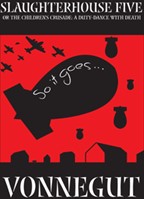
Slaughterhouse-Five, or The Children’s Crusade: A Duty-Dance with Death by Kurt Vonnegut: Recommended by Michelle Roubal, Professor & Librarian, Joliet Junior College
The novel’s opening line “All this happened, more or less,” clues us in from the start that our protagonist, Billy Pilgrim, is an unreliable narrator. Vonnegut’s satirical and self-referential novel presents a fragmented narrative centered on former soldier Pilgrim, as he becomes “unstuck in time” following his encounters with the extraterrestrial Tralfamadorians. This non-traditional, anti-war novel, published in 1969 about WWII (but informed by Vietnam), challenged conventional storytelling, featuring no climax, a nonlinear structure, and metafictional techniques. It covers topics ranging from history to politics, biography, philosophy, psychology, dark humor, ecology, overpopulation, consumerism, and the human condition, but first and foremost, it is anti-war.
I grew up in the shadow of WWII. My father was incarcerated in a Nazi forced labor camp in what was then Czechoslovakia. As a teenager, my mom read letters from soldiers to their illiterate, immigrant parents in her Russian and Lithuanian community near Chicago’s Midway Airport. I was mad for science fiction as a teenager, and this book, based on the author’s experiences as a POW in Germany during the Allied firebombing of Dresden, was infused with time travel and aliens. It really spoke to me. It might have been the first political novel I read or at least recognized as political. Vonnegut in this, and his other great works, led me to becoming both a pacifist and a humanist. In my opinion, Vonnegut is one of the greatest, bravest, literary voices of post-war America. That this book, given its themes, is one of the most challenged in this country is hardly surprising.

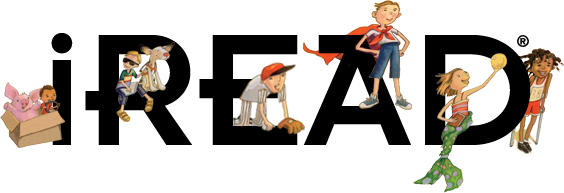 iREAD Summer Reading Programs
iREAD Summer Reading Programs Latest Library JobLine Listings
Latest Library JobLine Listings